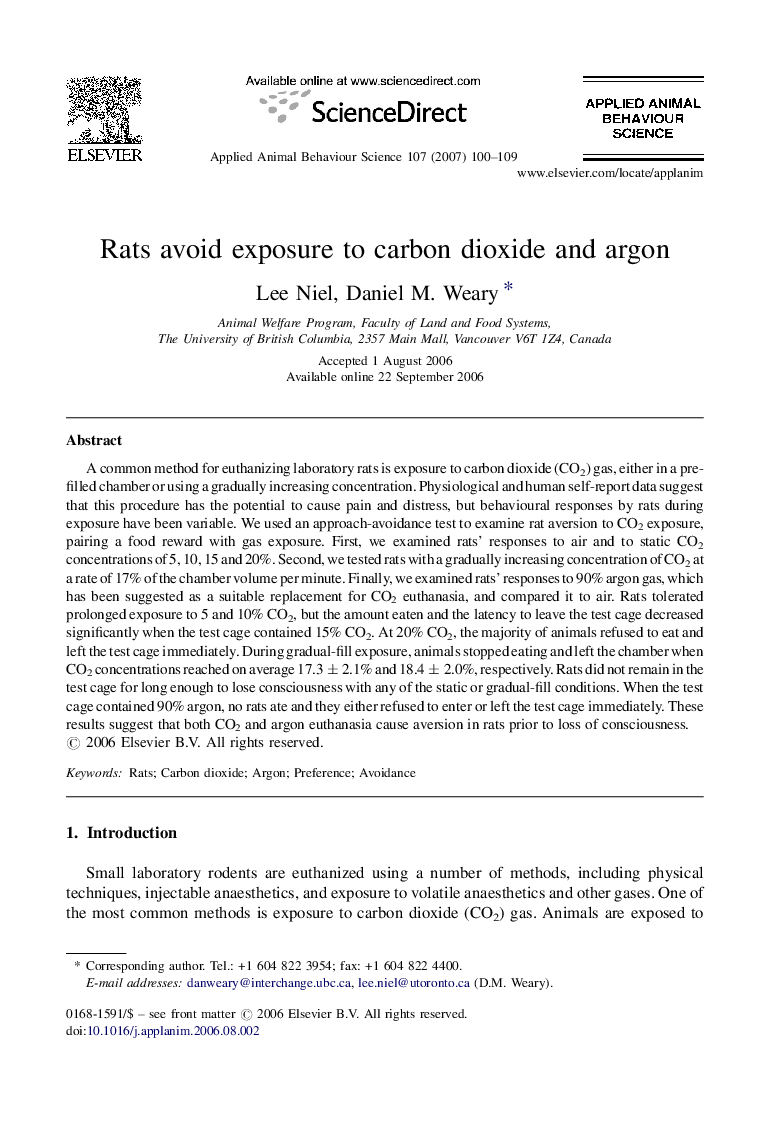| Article ID | Journal | Published Year | Pages | File Type |
|---|---|---|---|---|
| 4523938 | Applied Animal Behaviour Science | 2007 | 10 Pages |
A common method for euthanizing laboratory rats is exposure to carbon dioxide (CO2) gas, either in a pre-filled chamber or using a gradually increasing concentration. Physiological and human self-report data suggest that this procedure has the potential to cause pain and distress, but behavioural responses by rats during exposure have been variable. We used an approach-avoidance test to examine rat aversion to CO2 exposure, pairing a food reward with gas exposure. First, we examined rats’ responses to air and to static CO2 concentrations of 5, 10, 15 and 20%. Second, we tested rats with a gradually increasing concentration of CO2 at a rate of 17% of the chamber volume per minute. Finally, we examined rats’ responses to 90% argon gas, which has been suggested as a suitable replacement for CO2 euthanasia, and compared it to air. Rats tolerated prolonged exposure to 5 and 10% CO2, but the amount eaten and the latency to leave the test cage decreased significantly when the test cage contained 15% CO2. At 20% CO2, the majority of animals refused to eat and left the test cage immediately. During gradual-fill exposure, animals stopped eating and left the chamber when CO2 concentrations reached on average 17.3 ± 2.1% and 18.4 ± 2.0%, respectively. Rats did not remain in the test cage for long enough to lose consciousness with any of the static or gradual-fill conditions. When the test cage contained 90% argon, no rats ate and they either refused to enter or left the test cage immediately. These results suggest that both CO2 and argon euthanasia cause aversion in rats prior to loss of consciousness.
